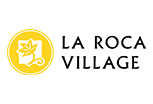Unlike typical Catalan products like olive oil or wine that have their origin linked to the arrival of the ancient Phoenicians, Greeks and Romans to the peninsula, the production of cheese in Catalonia has a more recent history. While in rural areas it was always a staple food, it was not until the fifteenth century that in the book Llibre de Sent Sovi -the first known cookbook written in Catalan- the first texts that speak specifically about cheese appear. Some recipes of the time, such as stuffed capon or different sauces, already included cheese among their main ingredients.
Currently, Catalunya offers a wide range of artisan cheese varieties made from cow, sheep, and goat’s milk. Among the frescoes, the mató of Montserrat and the brossat of the Pyrenees, made with cow’s milk; and the recuits typical of Girona that are made with sheep or goat’s milk. Among the most particular specialities we can find oil cheeses, the cendrats of the Montsec region, the curious cheese of the Tupí mountain, second fermentation cheese, and the cheeses of the DOP Alt Urgell and La Cerdanya, the only protected designation of origin for cheese in Catalonia. Throughout the Catalan territory it is possible to visit specialized fairs, small artisan cheese factories and even accompany a shepherd in his daily chores to learn how cheese is made.
In the Catalan gastronomy charcuteries, cured or cooked and mainly made with pork, are also noteworthy. The exceptions to this rule are the girella from the Lleida regions, made with lamb meat, as well as some mountain specialties that use game meat. Other essentials are the famous fuet, the bulls, the catalana and the llonganissa, which have an PGI (Protected Geographical Indication) in Osona, whose capital is the city of Vic. La Cerdanya is also an area of bull, bisbe and pa de fetge; in La Garrotxa the black paltruc stands out, and in El Pallars you must try the typical xolís of the Lleida Pyrenees.

















